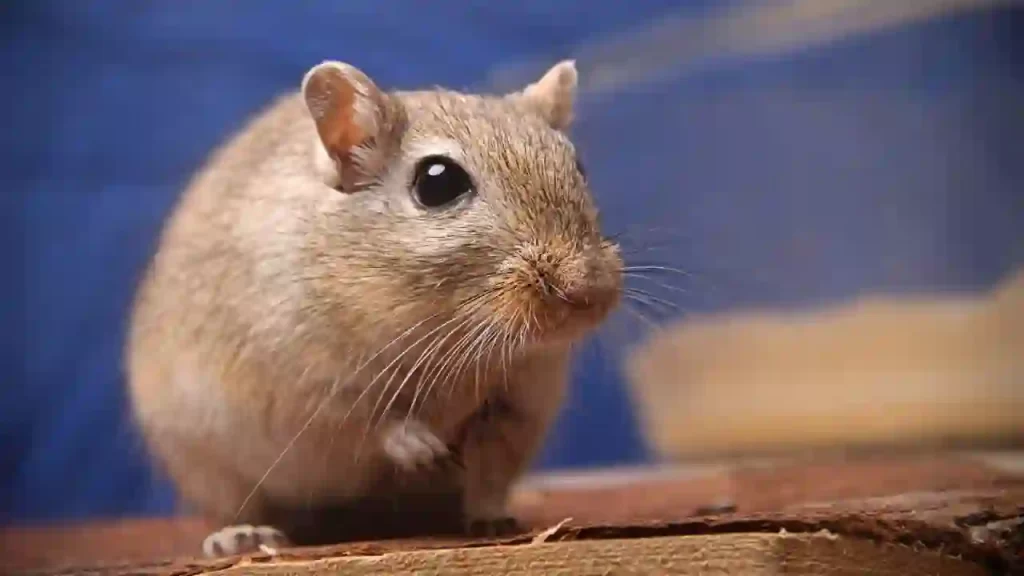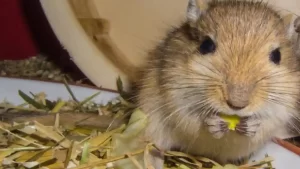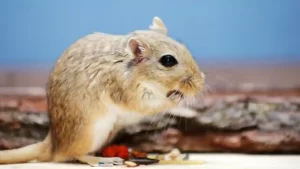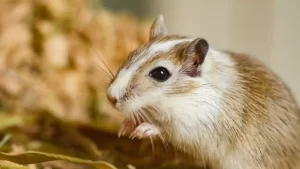Gerbils are small, furry rodents that make fun and playful pets. They are also very active and love to play, so they are a great choice for people who want a pet that will keep them entertained.
The name “gerbil” is derived from the Greek word gerbo, which means “rodent.” The jerboa was named after the gerbil because it resembles a gerbil and is not closely related.
Gerbils are social creatures and do best when they live in pairs or groups, so if you’re thinking about getting a gerbil, be sure to get two!
20 Gerbil Facts You Never Head Of
Gerbils are small, furry rodents that make fun and playful pets. They are also very active and love to play, so they are a great choice for people who want a pet that will keep them entertained. Gerbils are social creatures and do best when they live in pairs or groups, so if you’re thinking about getting a gerbil, be sure to get two!
Here are 20 interesting facts about gerbils that you may not have known:
- Gerbils originate from the deserts of Mongolia and northern China.
- Gerbils were first brought to the United States in 1954 by a scientist who was studying them for research purposes.
- Gerbils are very social creatures and do best when they live in pairs or groups.
- Gerbils are very active and love to play, making them great pets for people who want a pet that will keep them entertained.
- Gerbils have very sensitive hearing and can hear sounds that humans cannot hear.
- Gerbils have very good memories and can remember things that they have learned for up to two years.
- Gerbils can reproduce very quickly and can have litters of up to eight babies at a time.
- Gerbils are extremely clean animals and spend a lot of time grooming themselves.
- Gerbils are very curious and will often explore their surroundings by digging and chewing on things.
- Gerbils are very easy to care for and make great pets for people of all ages.
- Gerbils are not born with fur.
- Gerbils can jump up to 3 feet high.
- Gerbils have long lifespans and can live up to 15 years in captivity.
- Gerbils are omnivores and eat both plants and meat.
- Gerbils are native to the desert and have special adaptations that help them survive in hot, dry conditions.
- Gerbils are very active creatures and love to play.
- Gerbils are social creatures and do best when they live in pairs or groups.
- Gerbil babies are called pups.
- Gerbils are members of the rodent family.
- Gerbils are popular pets all over the world.
Gerbil Appearance

The gerbil has a long and slender body, which is covered in fur. The fur is generally light brown or tan in color, although there are some variations. The gerbil’s head is relatively small compared to its body, and it has large, erect ears.
The tail of the gerbil is also long and slender, and it is covered in hair. The gerbil’s feet are small and delicate, and they have long claws that help the animal to grip surfaces.
The gerbil is a relatively small mammal, and it typically measures between 4 and 6 inches in length. The average weight of a gerbil is between 2 and 3 ounces.
Health and Entertainment for your Gerbil
Gerbils are active and playful animals, and they need plenty of space to run and explore. A gerbil cage should be at least 2 feet by 1 foot, and it should be filled with toys and tunnels for the gerbil to play in.
Gerbils are also very clean creatures, and they groom themselves regularly. However, you will still need to clean the gerbil cage regularly to prevent odours from building up.
Gerbils are generally healthy animals, but like all pets, they can suffer from health problems if they are not cared for properly. Some common health problems that affect gerbils include obesity, dental problems, respiratory infections, and cancer.
If you take good care of your gerbil, it can live for up to 5 years.
Keeping Gerbils Healthy
Gerbils are relatively easy to care for and make great pets. However, like all animals, they require some basic maintenance to stay healthy. Below are some tips on how to keep your gerbil healthy and happy:
Provide a clean, spacious cage. Gerbils are active creatures and need plenty of room to move around. A good rule of thumb is to provide at least 2 square feet of space per gerbil. The cage should also be tall enough for them to stand up on their hind legs without bumping their head.
Clean the cage regularly. Gerbils are clean animals and will typically not soil their living area if it is kept clean. At a minimum, the cage should be cleaned once a week. However, more frequent cleaning may be necessary if the gerbils are particularly messy or if the cage is small.
Provide fresh water and food daily. Gerbils need access to clean water at all times. A water bottle with a sipper tube is the best way to provide this. As for food, a diet of high-quality pellets and fresh vegetables should be provided daily. Treats can be given occasionally, but should not make up more than 10% of their diet.
Provide plenty of toys and chewable objects. Gerbils are curious creatures and need stimulation to stay happy and healthy. A variety of toys and chewable objects, such as balls, blocks, and branches, should be provided. These can be rotated regularly to keep things interesting for your gerbil.
Take your gerbil to the vet for regular checkups. Just like any other pet, gerbils need to see a veterinarian on a regular basis. Annual checkups are typically sufficient, but more frequent visits may be necessary if your gerbil has any health concerns.
By following these simple tips, you can help your gerbil live a long and healthy life.
Keeping them Entertained
One way to keep your children entertained is by providing them with age-appropriate toys and games. If you have a baby, for example, you might want to get a few different kinds of soft toys that they can chew on and play with.
For older children, you might want to consider getting them some puzzles or board games that they can enjoy. You can also find a variety of children’s books at most bookstores.
Another way to keep your children entertained is to take them on outings to places like the park or the zoo. This can be a great way for them to burn off some energy and see new things. It’s also a good opportunity for you to bond with your children and spend some quality time together.
Finally, another way to keep your children entertained is to simply spend time with them. This can be done by reading stories together, playing games together, or just talking.
No matter what you do, it’s important that you find ways to keep your children entertained so that they don’t get bored. With a little creativity and effort, you should be able to come up with a variety of different ways to keep them occupied.
If you’re struggling to come up with ideas, there are plenty of resources available online and in libraries that can help you out. Just remember to have fun and enjoy the time you spend with your children!
Gerbil Behavior
Gerbils are active, social animals that enjoy spending time with their families. While they are not as high-maintenance as some other pets, there are still a few things you should know about gerbil behavior in order to keep them happy and healthy.
One important thing to remember is that gerbils are burrowers by nature. This means that they will often dig through their bedding in search of something to do. If you provide your gerbil with a digging box or sandpit, they will be much happier and less likely to damage their home.
Gerbils also like to chew on things, so it’s important to provide them with plenty of chew toys. Otherwise, they may start chewing on their cage or your furniture. Chew toys can also help keep your gerbil’s teeth healthy and sharp.
Finally, gerbils are social animals that need to spend time with their families. If you have more than one gerbil, it’s important to make sure they each have plenty of space to themselves. Otherwise, they may start fighting or displaying other negative behaviors.
By understanding the basic needs of your gerbil, you can provide them with a happy and healthy home. Keep these things in mind, and you’re sure to have a furry friend for life!
One way to keep your gerbils entertained is by providing them with age-appropriate toys and games. If you have a baby, for example, you might want to get a few different kinds of soft toys that they can chew on and play with.
For older gerbils, you might want to consider getting them some puzzles or board games that they can enjoy. You can also find a variety of children’s books at most bookstores.
Another way to keep your gerbils entertained is to take them on outings to places like the park or the zoo. This can be a great way for them to burn off some energy and see new things. It’s also a good opportunity for you to bond with your gerbil and spend some quality time together.
Finally, another way to keep your gerbil entertained is to simply spend time with them. This can be done by reading stories together, playing games together, or just talking.
Gerbil Habitat
Gerbils are omnivorous rodents that are closely related to mice and rats. They originate from the deserts of Mongolia and have since become popular pets in many parts of the world. Gerbils are small animals, typically only growing to be about 6-8 inches long.
The natural habitat of gerbils is arid and sandy, like that of a desert. In the wild, they live in underground burrows where they can escape the heat and predators. These burrows can be quite extensive, sometimes reaching up to 30 feet in length! Gerbils will also build several sleeping chambers and storage areas within their burrows.
In captivity, gerbils should be kept in a large cage that provides them with plenty of space to explore and play. The cage should be equipped with a hiding place, like a small cave or tunnel, as well as some toys and chewable objects. A layer of sand or fine gravel can also be added to the bottom of the cage to mimic the gerbil’s natural habitat.
Gerbils are social animals and do best when kept in pairs or small groups. If you’re planning on keeping more than one gerbil, it’s important to introduce them slowly so that they can get used to each other. Generally, females get along better with each other than males do.
If you provide your gerbil with good habitat and proper care, he can live for up to 5 years in captivity. With a little love and attention, your gerbil will be a fun and playful pet that you’ll enjoy for many years to come!
Gerbil diet
A Gerbil’s diet should consist mostly of hay, fresh vegetables and a small number of pellets.
A gerbil’s diet should consist mostly of hay, fresh vegetables and a small amount of pellets. This will help keep your gerbil healthy and prevent obesity.
Hay is an important part of a gerbil’s diet because it helps wear down their teeth and provides them with essential nutrients. Fresh vegetables are also important for a gerbil’s diet as they provide essential vitamins and minerals.
A small number of pellets can be given to a gerbil as well, but these should not make up the majority of their diet. (For More information on Gerbil’s diet, check our post What do gerbils eat.)
Threats to Gerbils
Gerbils are small, social rodents that make great pets. However, there are several potential threats to gerbils that pet owners should be aware of.
Predation is a major threat to gerbils in the wild. Small mammals like gerbils are often preyed upon by larger animals such as snakes, birds of prey, and even other small mammals. In captivity, predation is not typically a concern for gerbils since they are protected from larger animals. However, there have been reports of cats and dogs killing gerbils, so pet owners should take care to keep their gerbils safe from predators.
Another threat to gerbils is a disease. Although gerbils are generally healthy animals, they can be susceptible to certain diseases. The most common disease that affects gerbils is pneumonia, which can be fatal if not treated promptly. Gerbils can also contract other diseases such as diarrhoea, ear mites, and even cancer. Therefore, it is important for pet owners to take their gerbils to the veterinarian for regular checkups and to get them vaccinated against common diseases.
Finally, another potential threat to gerbils is abuse. Although gerbils are not typically aggressive animals, some people may harm them out of frustration or boredom. Pet owners should never hit or shake their gerbils, as this can cause serious injury or even death.
By understanding the potential threats to gerbils, pet owners can take steps to keep their beloved pets safe and healthy.
Reproduction Cycle of Gerbil
The reproduction cycle of gerbils is interesting because they can have litters of up to 8 young, but they typically only have 2-4 young per litter. The gestation period for gerbils is only about 24 days, so they reproduce quickly. Females will often have 2-3 litters per year.
Once born, gerbil babies (called pups) are blind and hairless. They will grow quickly though, and by 3 weeks old they will be fully furred and have their eyes open. They will be ready to leave their mother and start their own lives by 4-5 weeks old.
Gerbils are social animals and typically live in pairs or small groups. However, they can also live happily on their own. If you are considering getting a gerbil as a pet, make sure to do your research to find out which set-up will be best for your new furry friend.
Pictures Of Gerbils
To find out amazing pictures of gerbils, go through this link. You will find amazing pickes of these beautiful small fury friends.
Conclusion – What are Gerbils?
Gerbils are small, mouse-like rodents that are native to Africa and Asia. They have long tails, big ears, and are usually brown or grey in color. Gerbils are very active and love to play. They are also very social animals and enjoy being around other gerbils. Gerbils make great pets for both children and adults.





